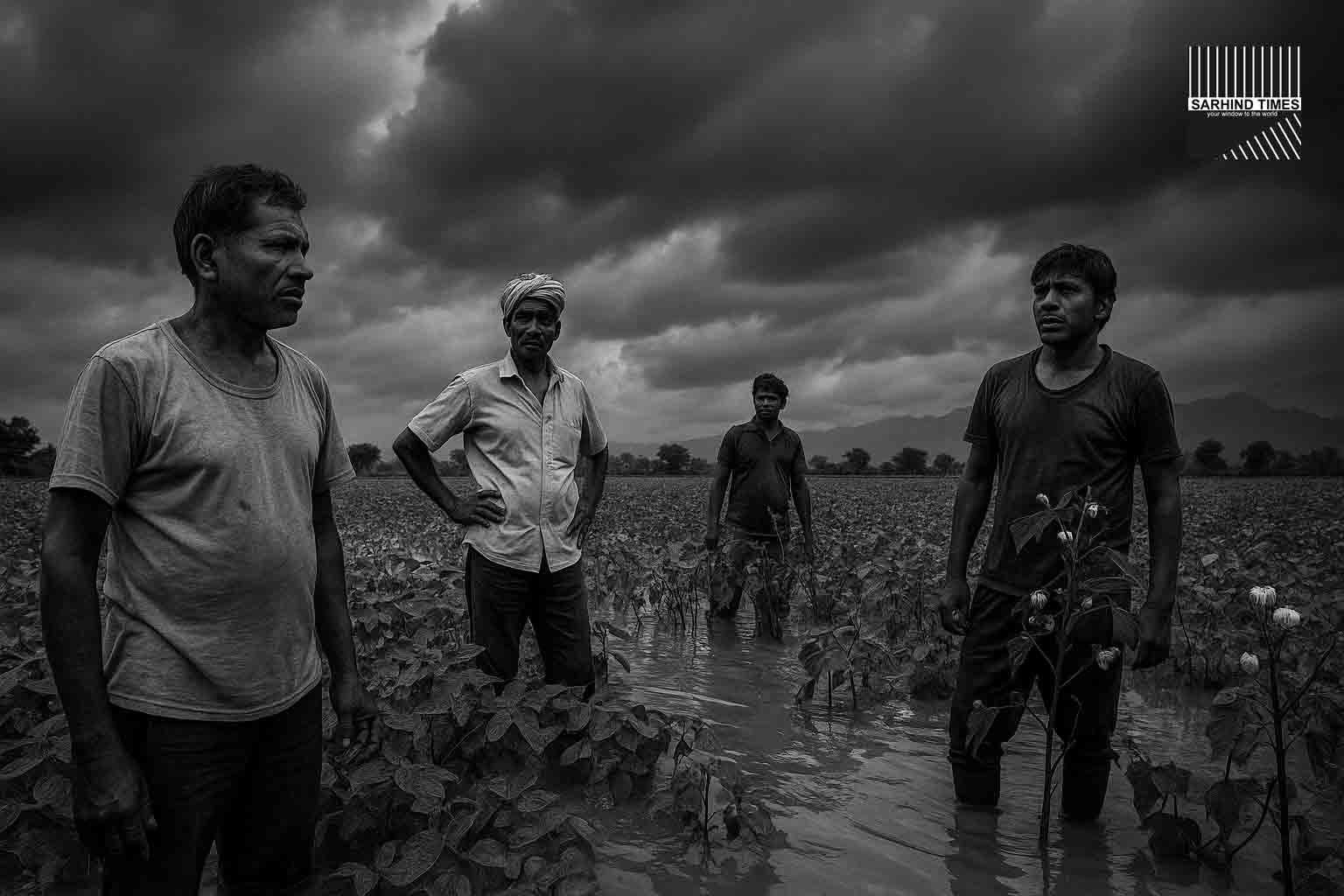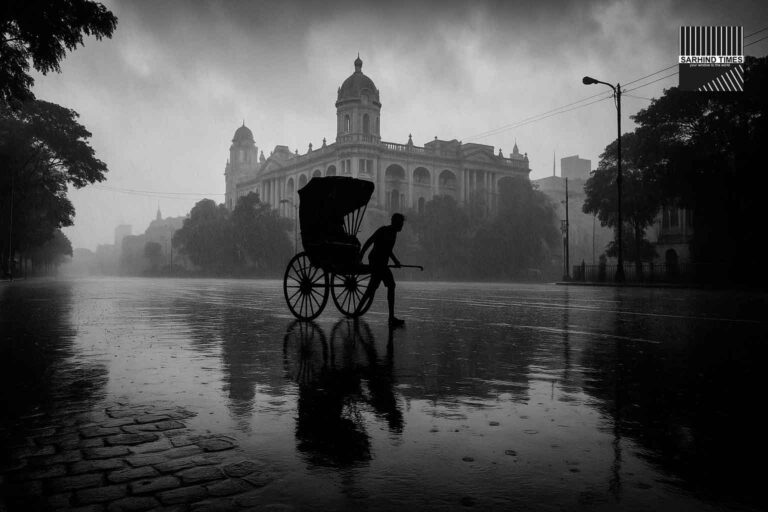The India Meteorological Department (IMD) has issued a fresh alert for Pune and Marathwada’s farming belts, warning of late-season rains that could damage standing kharif crops and disrupt harvesting schedules. For a region heavily dependent on agriculture, and already coping with erratic weather in recent years, the warning has triggered anxiety among farmers, policy planners, and local administrators alike.
The kharif season—typically spanning June to September—was nearing closure with crops like soyabean, cotton, tur (pigeon pea), and paddy ready for harvest. But the IMD’s forecast of widespread rainfall due to a revived low-pressure system over the Bay of Bengal means farmers now face a heightened risk of lodging (plants toppling), grain discolouration, fungal attacks, and waterlogging in fields.
The Science Behind the Alert
Meteorologists explained that:
- A low-pressure area over the Bay of Bengal is intensifying and moving westward.
- This is intersecting with a trough line across central India, channelling moisture into Maharashtra.
- Widespread rains are expected across Marathwada, Madhya Maharashtra, and Pune districts over the next 72–96 hours.
The IMD said districts like Beed, Parbhani, Osmanabad, Latur, Jalna, and Aurangabad could receive heavy to very heavy rainfall, while Pune, Satara, and Solapur may see moderate-to-heavy downpours.
Kharif Crops at Risk
- Soyabean:
- At harvest stage in Marathwada.
- Rainfall can cause pod shattering and seed discolouration.
- Cotton:
- Susceptible to boll rot and pest infestations if excess humidity lingers.
- Tur (Arhar/Pigeon Pea):
- Still maturing; standing water could affect root health.
- Paddy:
- Particularly vulnerable to lodging; standing water delays harvest and milling.
Experts warn that even 3–4 days of heavy rain could cause losses worth hundreds of crores, given the crop area under cultivation.
Farmers’ Voices
- Shankar Jadhav, Osmanabad farmer: “Soyabean is ready in my field. If this rain continues, half my crop will rot before it is cut.”
- Ramesh Pawar, Beed farmer: “We had good rains in July, but September showers are never good for harvest. Cotton already has pest issues.”
- Woman farmer, Solapur: “We do not have storage or drying yards. Once rain falls, everything is at the mercy of the sky.”
The Economic Dimension
Marathwada and Pune belts are critical contributors to Maharashtra’s kharif output:
- Soyabean: Maharashtra contributes ~30% of India’s soyabean.
- Cotton: Major cash crop for Marathwada farmers.
- Pulses (Tur): Crucial for India’s dal supply.
A late-season disruption could:
- Lower market arrivals.
- Push up retail prices of edible oils and pulses.
- Add to farmer debt cycles already stretched by erratic monsoons.
Government Response
Officials have asked district administrations to:
- Activate relief teams in case of waterlogging and flood damage.
- Monitor procurement centres to ensure crops can be stored quickly.
- Issue advisories through Krishi Vigyan Kendras and WhatsApp farmer groups.
Maharashtra Agriculture Minister assured farmers that loss assessments will be conducted promptly and relief announced if needed.
Historical Context: Weather Extremes in Marathwada
- Droughts: The region is infamous for recurring droughts (e.g., 2014–2016).
- Floods: In recent years, unseasonal October rains destroyed standing crops.
- Climate Change: Variability is increasing, making both drought and flood possible within the same season.
For many farmers, climate shocks translate into loan defaults, migration, and distress sales.
Experts’ Insights
- Agronomist: “Soyabean is the biggest risk. Farmers should prioritize harvesting and drying even at lower moisture content.”
- Economist: “If yields drop, oil imports will rise, worsening India’s trade deficit in edible oils.”
- Climate Scientist: “Such late-season events are consistent with global warming impacts on monsoon withdrawal cycles.”
Urban Angle: Pune Under Watch
For Pune city:
- Waterlogging risk at low-lying areas.
- Traffic snarls expected if heavy showers persist.
- Navratri festivities could face disruptions in open venues.
Thus, while farmers face agrarian losses, urban residents too will grapple with late-season inconveniences.
Possible Mitigation Steps
- Short-Term:
- Farmers advised to harvest mature crops immediately.
- Use tarpaulin sheets for on-field protection.
- Dry grains at cooperative centres.
- Medium-Term:
- Build decentralized storage silos.
- Promote insurance coverage under PMFBY.
- Long-Term:
- Invest in climate-resilient crop varieties.
- Improve drainage and watershed management in Marathwada.
Social Dimension
Late rains disproportionately affect small and marginal farmers, who lack:
- Access to storage facilities.
- Financial buffers to withstand crop loss.
- Political clout to ensure timely compensation.
Women farmers, who shoulder post-harvest work, often bear the brunt of extended labour and stress.
Conclusion
The IMD’s alert for Pune and Marathwada’s farming belts is a warning shot about the fragility of Indian agriculture in an era of climate change. As farmers brace for potentially damaging rains, the stakes go beyond immediate crop losses—they affect rural incomes, national food inflation, and the credibility of safety nets meant to protect the backbone of India’s economy.
What happens over the next few days will decide whether 2025’s kharif season is remembered as a success or yet another climate-induced setback.
#IMDAlert #PuneRains #Marathwada #KharifCrops #Soyabean #Cotton #Farmers #ClimateChange #SarhindTimes

























+ There are no comments
Add yours